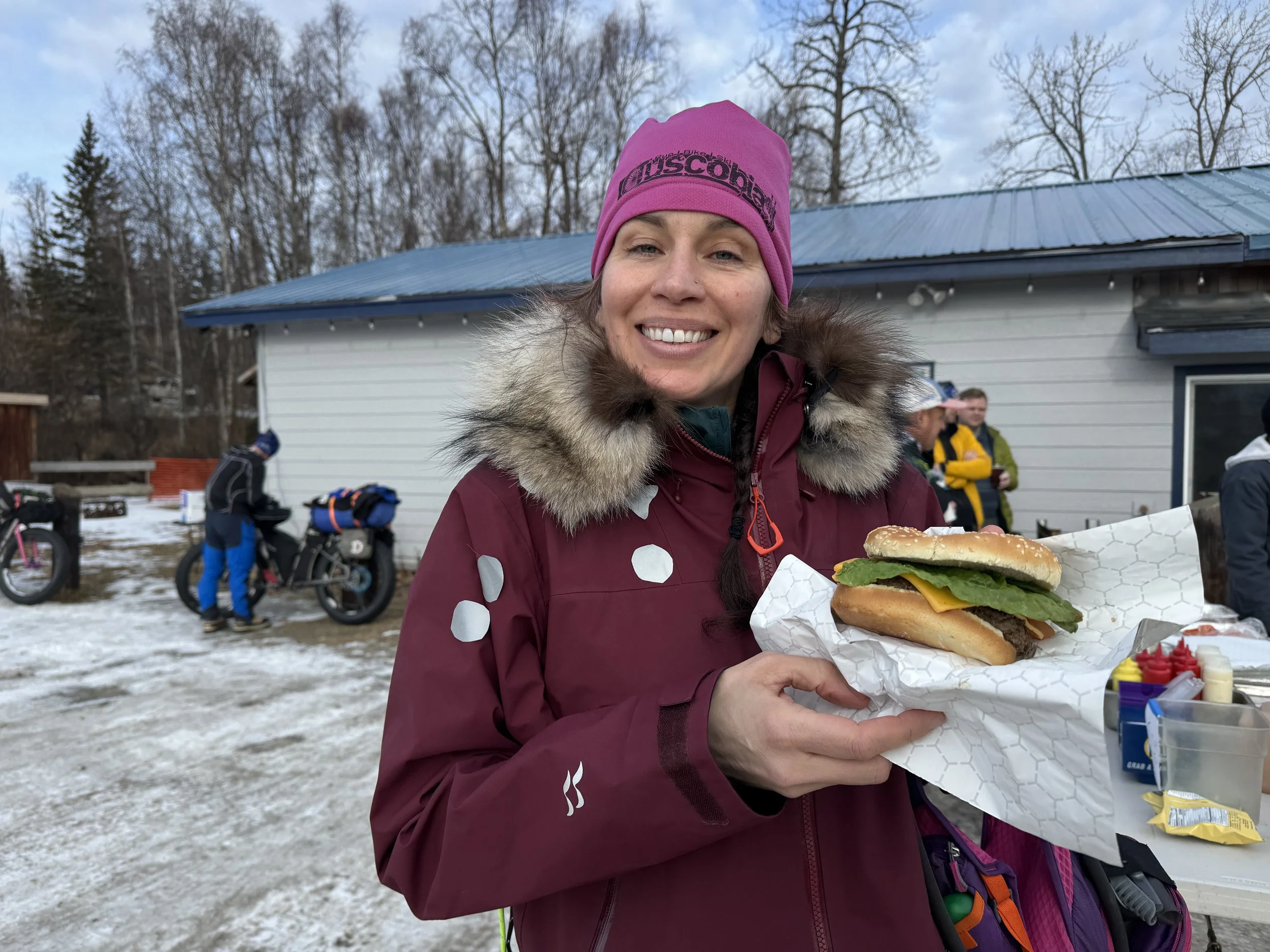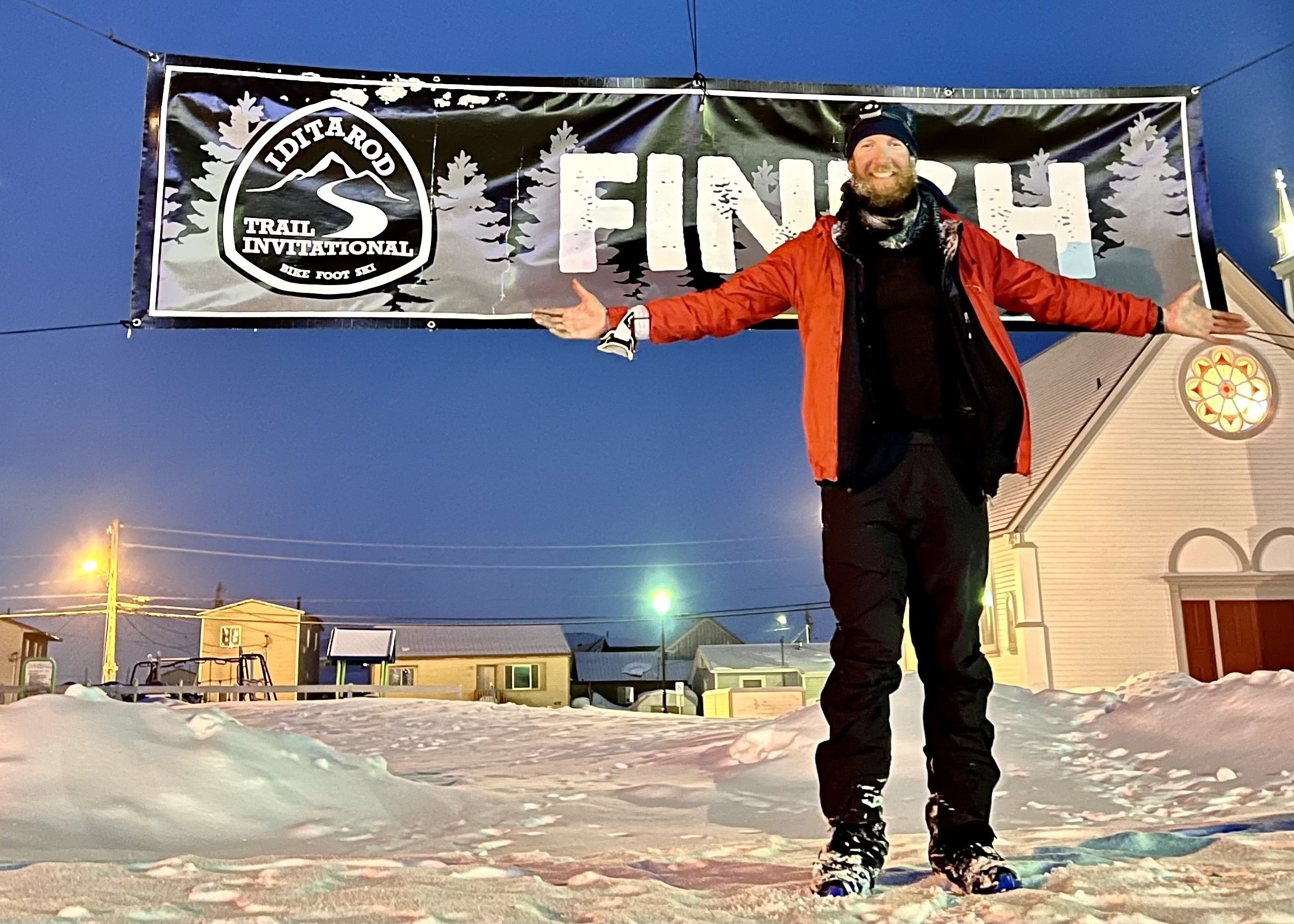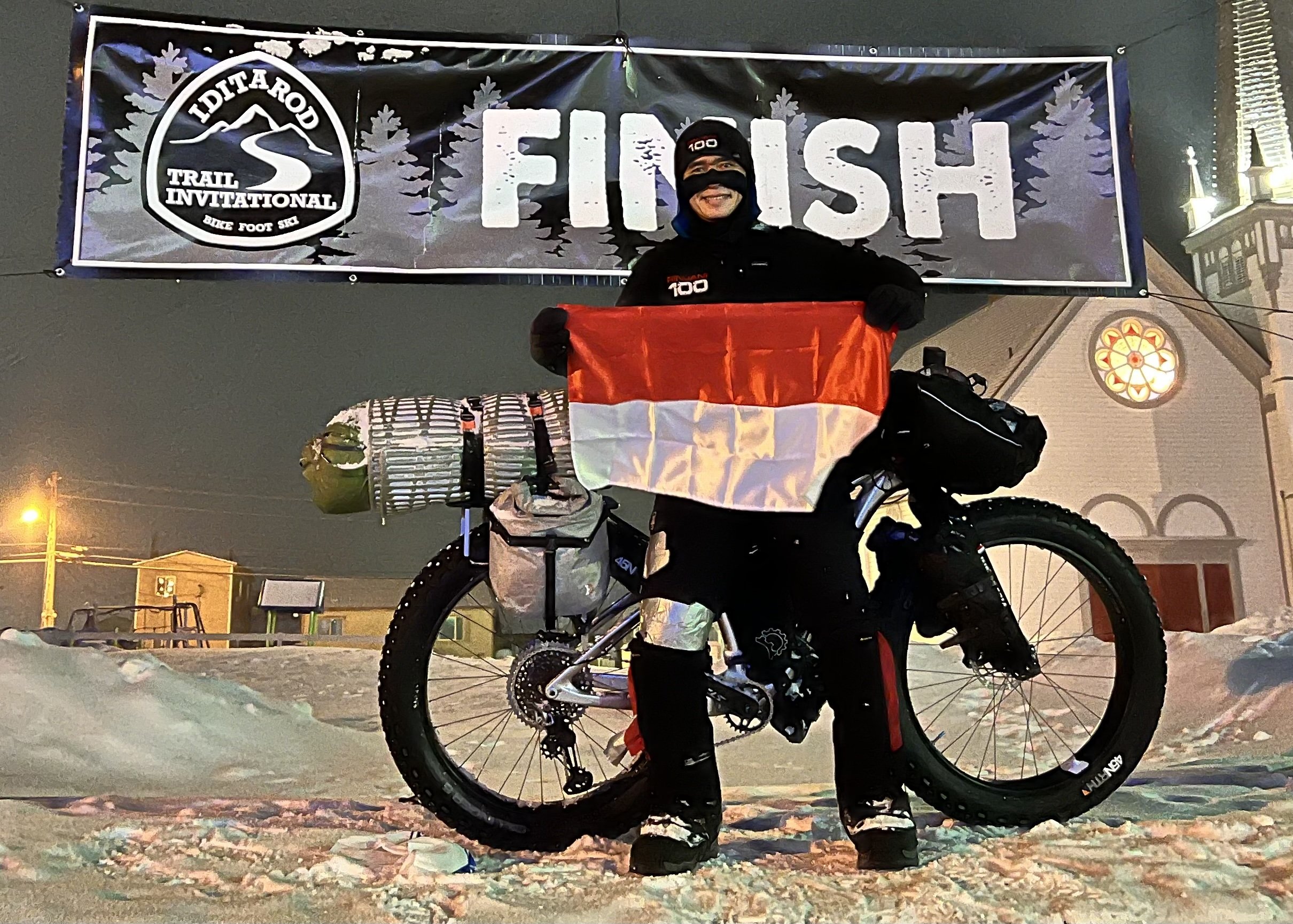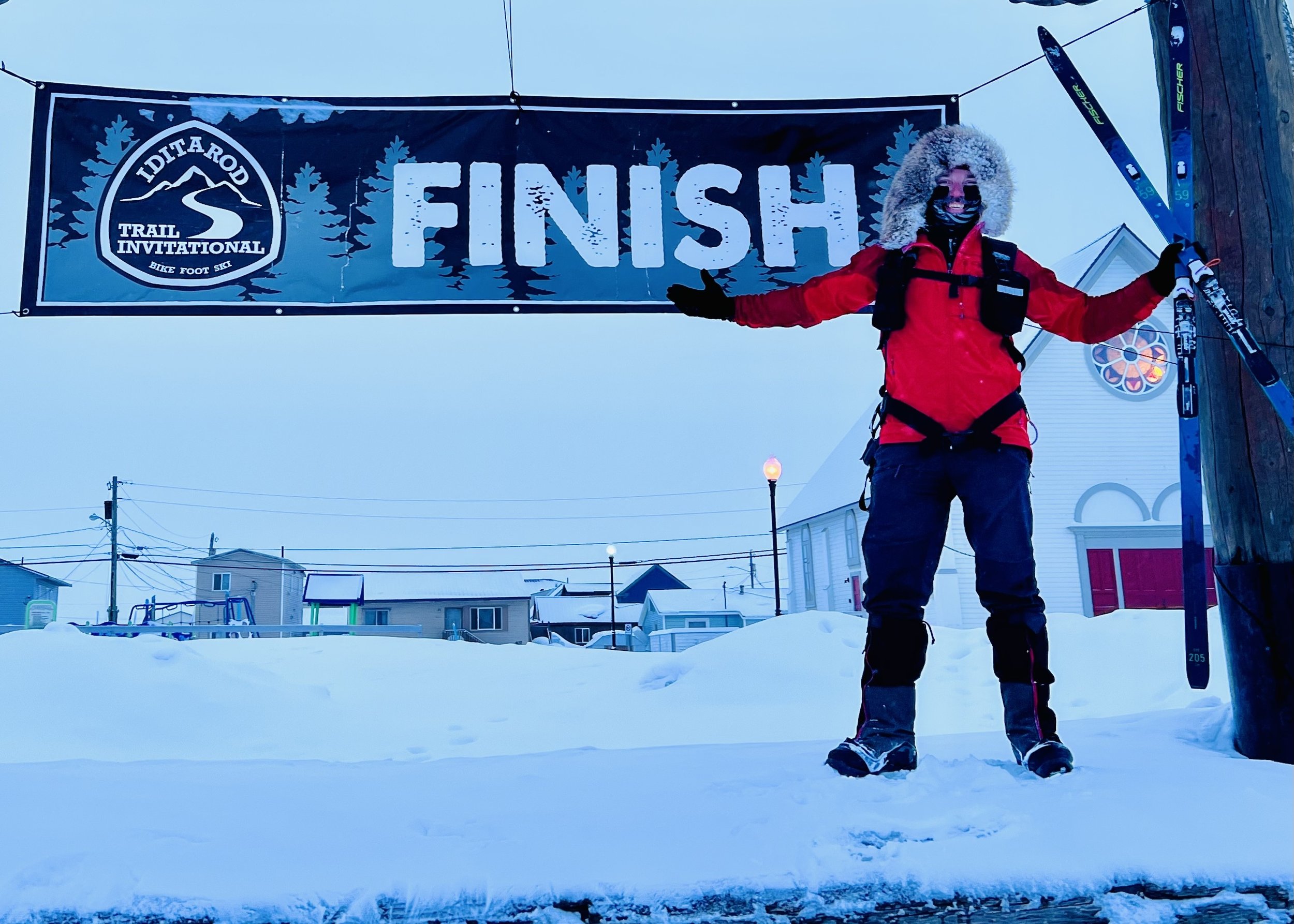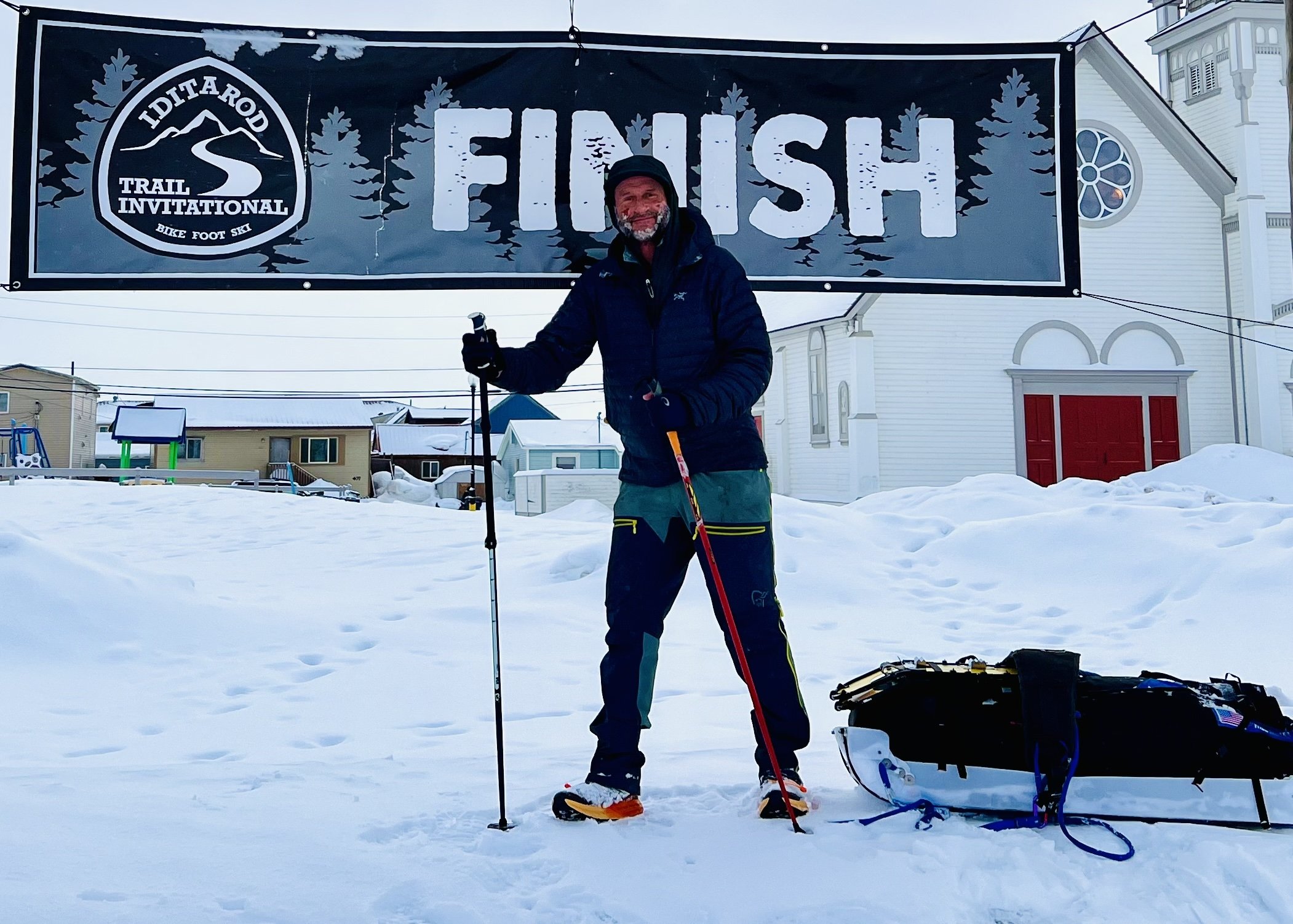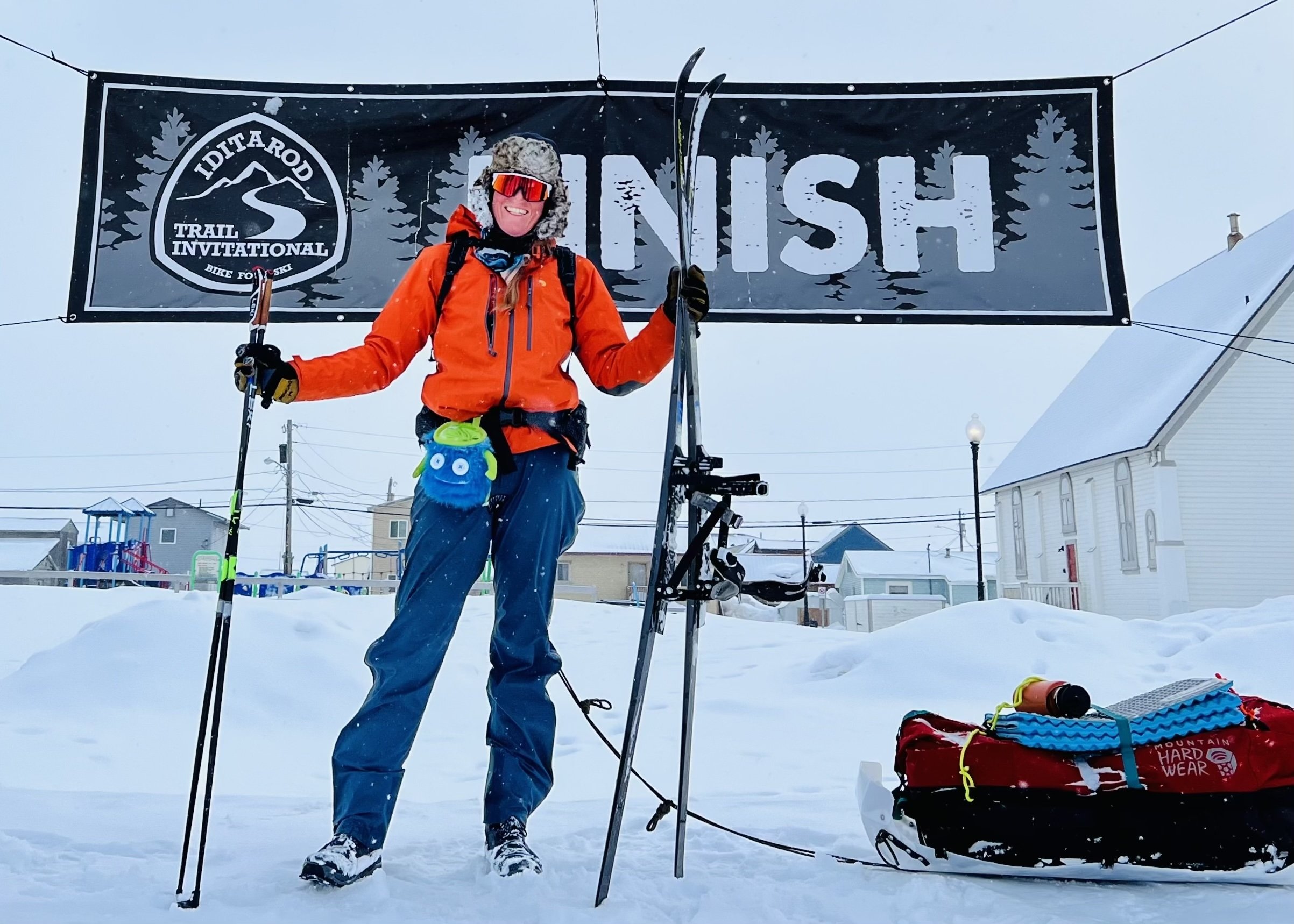3/6/2025 5:00PM AKST
By Allison Carolan
The 1,000 mile athletes have spent the last 12 days crossing swamps, climbing mountain passes, traveling through gorges, burns, and navigating gravel, ice, soft snow, sleet, and tussocks. For the intrepid 24 now journeying through the depths of the Alaskan Interior and to the coast, the silence might have seemed profound at first, broken only by wind, occasional wolves, and perhaps the echoes of gold rush adventurers, serum run heroes, mail carriers, and sled dogs who came before. Without this rich history, there would be no sled dog race, no human-powered adventures of the Iditarod Trail Invitational (founded in 2002), and no dot-watching for us. More on the Iditarod history in just a moment; first, let’s uncover what’s been happening for the past 24 hours.
Peter Delemere has led the biker pack for days despite telling volunteers in Nikolai he never intended to be in front. After taking some extended rest breaks, including last night at Old Woman Cabin and this morning in Unalakleet, he was joined in Unalakleet by Casey Fagerquist and Joshua Brown during presumably a brunch feast in Unalakleet, home of the famous “Peace on Earth Pizza.” The three departed together at 3:00pm heading for the foothills. Now well ahead of the women bikers still on the Yukon, this group will be the first to encounter and report on this year's coastal conditions beyond Unalakleet.
Janice Tower and Matt Tanaka arrived in Galena just after midnight this morning, benefiting from overall good trail conditions on the Yukon (although occasionally soft snow in warmer daytime temps), with Julie Perilla Garcia and Karl Booth following shortly after. 'Iron Grandma' Janice noted yesterday that despite the challenging climbs on the leg from McGrath to Ruby, she was enjoying the village sections beyond, and looking forward to seeing the sled dog teams. Incidentally today, one of our Wild Winter Women sleuths was watching the Iditarod Sled Dog Race live-stream around mid-day, and was able to clearly see Karl Booth & Julie Perilla Garcia on their bikes in the background of the livestream (the photo is posted on instagram), likely departing as mushers Paige Drobny and Ryan Redington tended to their teams at the Galena checkpoint. Team Tanaka left Galena with Julie and Karl, suggesting all four bikers witnessed the sled dog action. Photos by Ryan Wanless would indicate that a very fun breakfast “juice box party” was had by this group of bikers in Galena before leaving.
In the foot division, Kari Gibbons has steadily progressed along the Innoko River, crossing the 400-mile mark late this afternoon. After stopping at Carlson Crossing Cabin from 7 PM to 7 AM, she reported getting “good rest.” Racers are now settling into shelter cabin routines of melting snow and chopping wood. Foot athletes particularly may need to gather clean snow for water before reaching cabins, as nearby snow is often trampled and dirty.
Foot athlete Magdalena Paschke has been traveling about 15 miles behind Kari the past two days and also spent some time resting at Carlson Crossing, overlapping with racers Kari, Daniel Heon, and Petr Ineman. Magdalena set out again today just before noon, and as of this evening she appears to be anchoring the remaining field of 24 as Sean Brown has turned back to McGrath.
The weather on the Yukon can be famously cold, but the forecasts from Ruby to Kaltag remain in the 20’s and 30s for the next several days. With that said, the racers are spread out across nearly 400 miles of trail now, and the front runners could be hitting some headwinds soon, with the forecast predicting 20 knot north winds by Friday evening, increasing to 30 knot winds through the weekend.
While the ‘ITI nerds’ who bring you these updates traditionally try to stay ‘in our lane’ of emphasizing the women athletes who take on the ITI, there is one rookie Iditarod musher we must shout out who is a longtime member of the Wild Winter Women. Emily Ford, of Duluth MN, is holding her own quite nicely and currently resting her team between Ruby and Galena. And that, my friends, brings us full circle back to the Iditarod’s history, and two trailblazing women, Dorothy Page and Mary Shields.
The Iditarod Sled Dog Race’s Origins
The Iditarod Trail Race began in 1973, envisioned by Dorothy G. Page (the "Mother of the Iditarod") and Joe Redington Sr. to honor sled dogs and the historic freight route that shaped Alaska's modern day identity. Page's vision, recognized by her 2018 induction into the Alaska Women's Hall of Fame, celebrates the unique musher-dog bond across Alaska's challenging terrain.
While dog teams were used for thousands of years by Inupiaq, Yup'ik, and Athabascan communities across Alaska, they became essential for settlers in the 1800s. Gold seekers and pioneers used dog teams to carve paths from coastal towns into interior goldfields, navigating terrain no horse could traverse. The trail evolved into a vital lifeline, carrying mail, supplies, and lifesaving serums across the frozen frontier. With the advent of bush planes and snowmobiles in the 20th century, dog teams faded into relative obscurity, and the Iditarod Trail began vanishing beneath encroaching wilderness.
Mary Shields: A Trailblazer
Early skeptics dismissed the idea of a 1,000-mile sled dog race as impossible, but the "Last Great Race" was born nonetheless. The inaugural year saw 22 mushers and the following year in 1974, a woman named Mary Shields joined the musher ranks—forever changing the future of the sled dog race and the ITI to come.
Mary Shields grew up in Wisconsin and as a UW college student, she traveled to Alaska for a summer job and made the life-altering decision to move there. A few years later she signed up for the Iditarod Sled Dog Race.
On the first day of the 1974 race, a spectator shouted, "You better turn around now, you'll never make it to Nome." Rather than discouraging her, these words fueled her determination. Through frostbite, dangerous river overflows, temperatures below -40°F, ground blizzards, and sleep deprivation, she persevered.
At checkpoints, Shields later revealed, men would bet on when she would drop out, while many women quietly wagered she would finish. After 29 grueling days, she reached Nome's finish line—proving gender had no bearing on wilderness fortitude. Her historic finish laid the foundation for generations of women who would follow on the Iditarod Trail, including our ITI athletes.
Decades later, addressing the mushers at the Iditarod Sled Dog Race starting line, she said:
"This is a message from a musher who, just like you, was waiting to take off on the second Iditarod, forty-one years ago. Every musher around the world wishes they could be in your shoes. Every time you harness your dogs, put your parka on, remember every minute of it. The years pass, and you'll wonder where all the time went. Take good care of yourself and remember every minute."
Later in life, with the first snowfall each year, Mary would still harness her team. She never yelled "mush"—derived from the French "marchez"-- as a command to her dogs. She always emphasized that it was never a command but a call to journey.
For our 1,000 mile athletes, a final wish for you as you continue into the great unknown: may your musher spirit and your inner dog become one enduring force, balancing joy and struggle with shrewd decisiveness and care. You now carry the torches of the survivors, the seekers, the heroes, and the dreamers who have preceded you. May you embrace this great adventure despite all that nature may throw at you, and do so deliberately. Like the dog teams that have run before you, let yourselves be called to the journey, and never commanded. Let any doubts cast by others or within yourself only fuel your resolve, and as Mary Shields once said, "Take good care and remember every minute."













